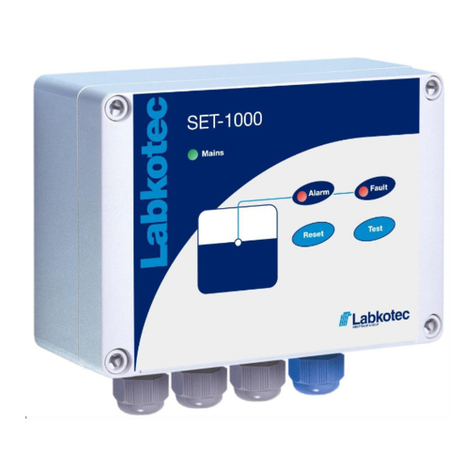SET-2000 (110 VAC) D15349AE-1
Installation and Operating Instructions
Copyright © 2019 Labkotec Oy 5/15 We reserve the right for changes without notice
2.1 Cabling when using cable junction box
If the sensor cable must be extended or there is need for equipotential
grounding, it can be done with the cable junction box. The cabling
between the SET-2000 control unit and the junction box should be
done with a shielded twisted pair instrument cable.
LJB2 and LJB3 junction boxes enable cable extension in explosive
atmospheres.
In examples in figures 4 and 5 the shields and excess wires have
been connected to the same point in galvanic contact with metallic
frame of the junction box. This point can be connected to equipotential
ground thru the ground terminal. Other components of the system that
need to be grounded can also be connected to the same ground
terminal.
The wire used for equipotential ground must be min. 2.5 mm²
mechanically protected or, when not mechanically protected, the
minimum cross section is 4 mm².
Please make sure, that the sensor cables do not exceed the
maximum allowed electrical parameters –see appendix 2.
Detailed cabling instructions can be found in the instructions of
particular Labkotec SET sensors.
2.1.1 Level sensors in the same area and zone
In the example in figure 4 the level sensors are located in the same
area and in the same explosion-hazardous zone. Cabling can be
made with one two-pair cable, whereupon both pairs are equipped
with their own shields. Make sure, that the signal wires of the
cables can never be connected to each other.
Figure 4. Level sensor cabling with a junction box when the
level sensors are in same area and same zone.




























